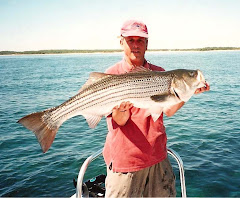
We have now entered the pelagic zone. This is the time of season when fly anglers' thoughts turn to local members of the tuna and mackerel family. The first of those annual pelagic visitors, Spanish mackerel and bonito have made their way to our inshore waters. I have been chasing Atlantic bonito around Long Island for more than thirty years but I never tire of catching them on the fly. The advance guard of bonito showed up several weeks ago in the central Long Island Sound area, but as of late those early shows have gotten somewhat scarce. The fish that are still hanging around have developed a mild case of selective lockjaw but that could change as quickly as the next tide. If you encounter stubborn fish, mix up the selection of flies and retrieves until you hit upon the right combination. Pods of bonito are now dispersed around Long Island and by all current accounts appear to be moving east to west and setting up shop. Increasing numbers of recent reports indicate bonito catches in areas of the western Sound and central south shore locations in close proximity to inlets and bays. Several fly anglers who chase bonito regularly report finding larger numbers of fish in the western most regions of the Long Island Sound. As the fish disperse they are also showing up in some non-typical locations so it pays to do some scouting and exploring. While the numbers of bonito are not yet anywhere near the epic runs of 2003 and 2007, we should see more fish moving into Long Island and Connecticut waters in the coming weeks and months, and along the south shore as well. Expect the numbers of Long Island "bones" to build to a crescendo as they eventually mix in with later arriving Little tunny and then peak during the fall run. In addition to all the prolific bait that has been around the past few weeks, I've encountered massive schools of bay anchovies as well. Their presence bodes well for pelagic enthusiasts. With a little luck we may also get some inshore shots this season at skipjack and small bluefin tuna. Pelagic species can at times be very tough fish to get to eat a fly. Their presence has a way of bringing out the best and the worst in anglers. Please remember to exercise courtesy when fly-fishing for them. There is absolutely no need to blast in on an angler who is either hooked up or patiently waiting for a pod of fish to surface. The most enjoyable part of this game is finding, hooking and catching your own fish, not finding some other angler who is catching them! Good luck!











